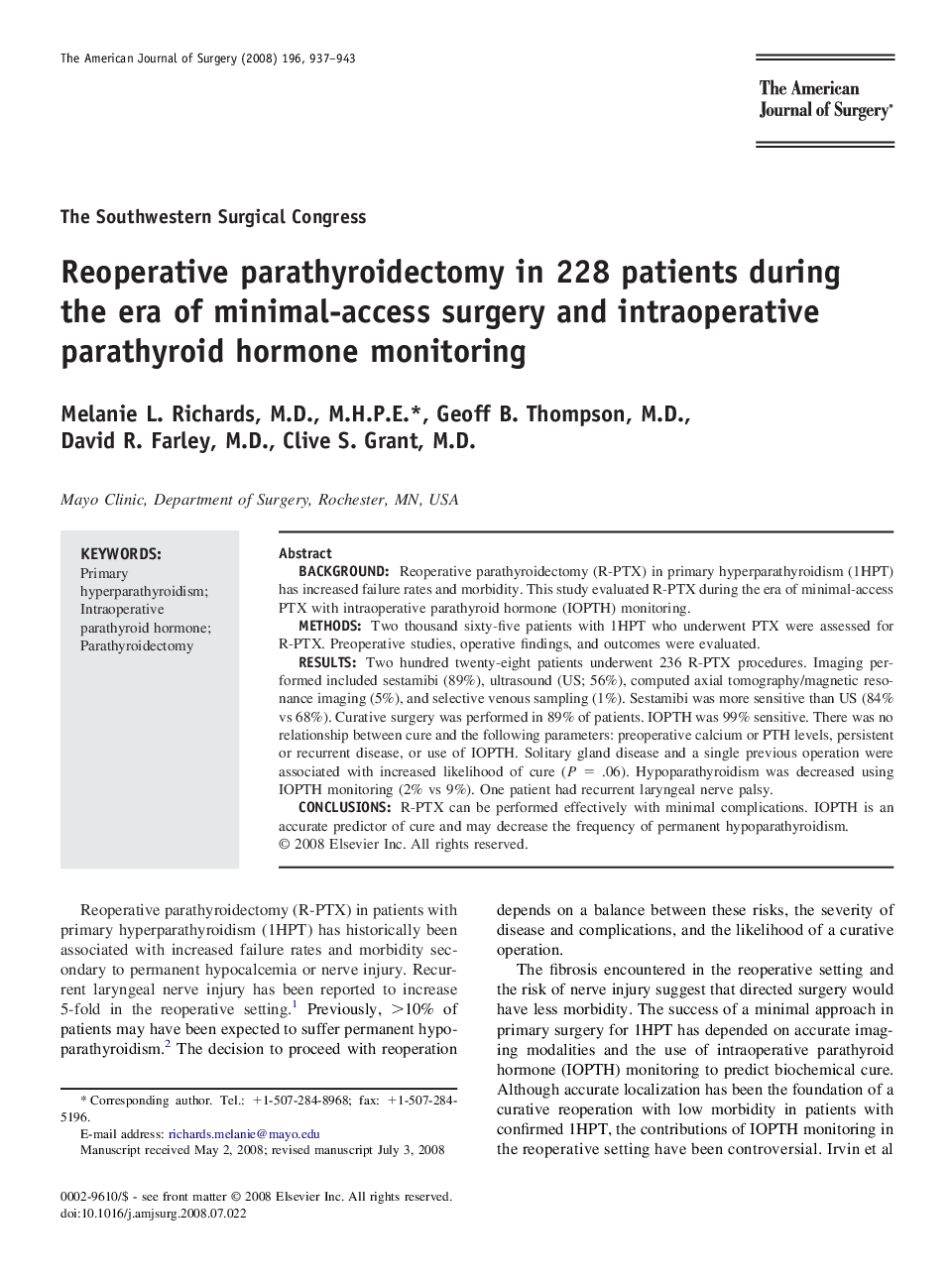| Article ID | Journal | Published Year | Pages | File Type |
|---|---|---|---|---|
| 4280935 | The American Journal of Surgery | 2008 | 7 Pages |
BackgroundReoperative parathyroidectomy (R-PTX) in primary hyperparathyroidism (1HPT) has increased failure rates and morbidity. This study evaluated R-PTX during the era of minimal-access PTX with intraoperative parathyroid hormone (IOPTH) monitoring.MethodsTwo thousand sixty-five patients with 1HPT who underwent PTX were assessed for R-PTX. Preoperative studies, operative findings, and outcomes were evaluated.ResultsTwo hundred twenty-eight patients underwent 236 R-PTX procedures. Imaging performed included sestamibi (89%), ultrasound (US; 56%), computed axial tomography/magnetic resonance imaging (5%), and selective venous sampling (1%). Sestamibi was more sensitive than US (84% vs 68%). Curative surgery was performed in 89% of patients. IOPTH was 99% sensitive. There was no relationship between cure and the following parameters: preoperative calcium or PTH levels, persistent or recurrent disease, or use of IOPTH. Solitary gland disease and a single previous operation were associated with increased likelihood of cure (P = .06). Hypoparathyroidism was decreased using IOPTH monitoring (2% vs 9%). One patient had recurrent laryngeal nerve palsy.ConclusionsR-PTX can be performed effectively with minimal complications. IOPTH is an accurate predictor of cure and may decrease the frequency of permanent hypoparathyroidism.
